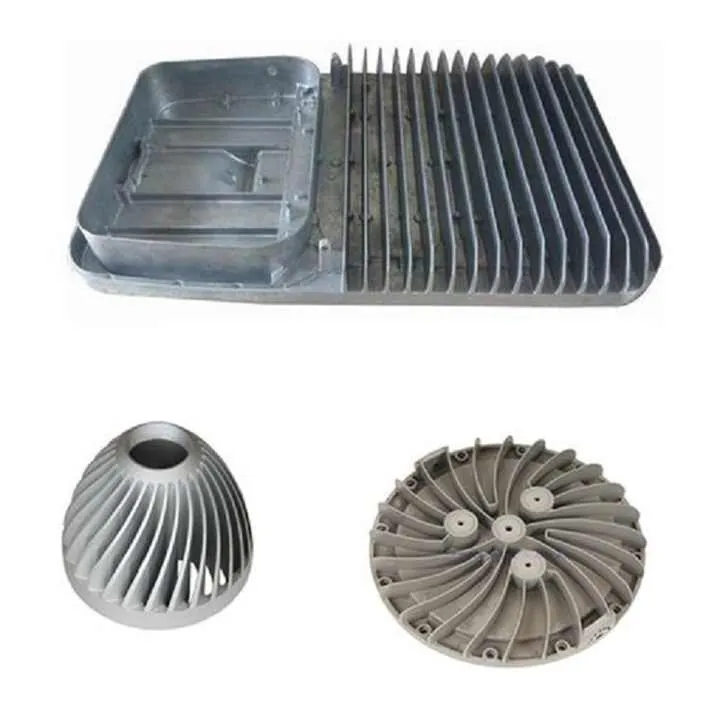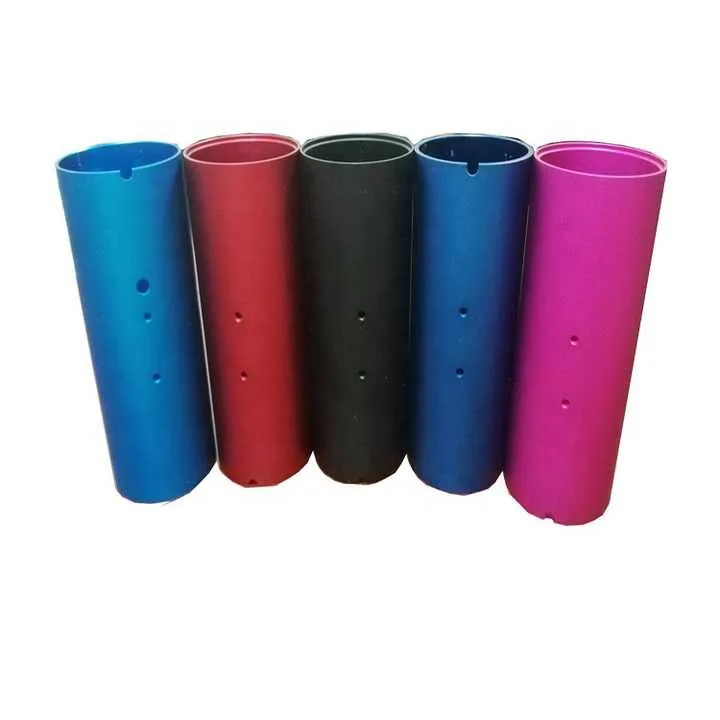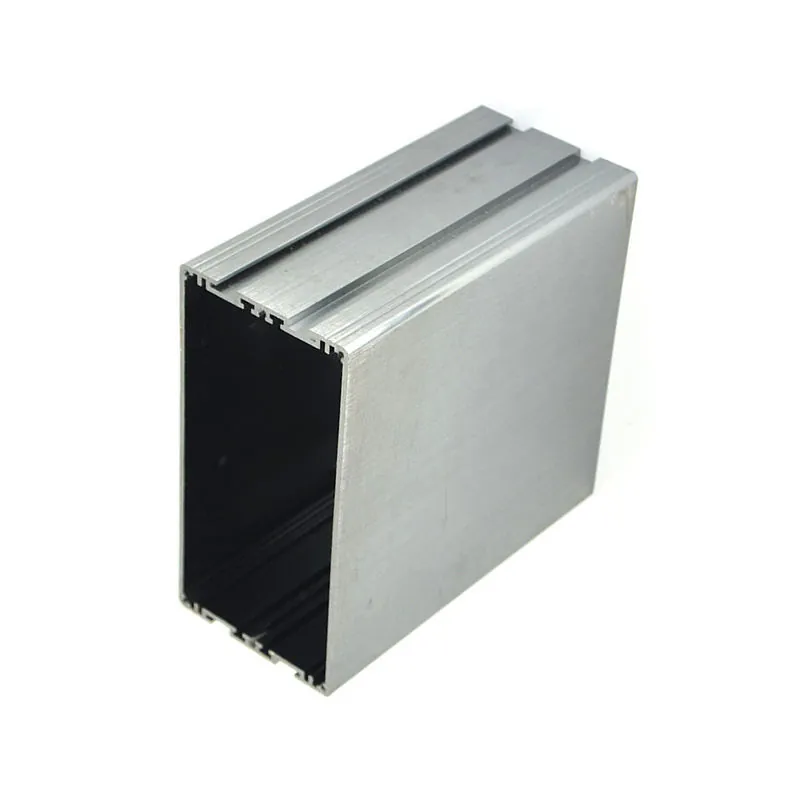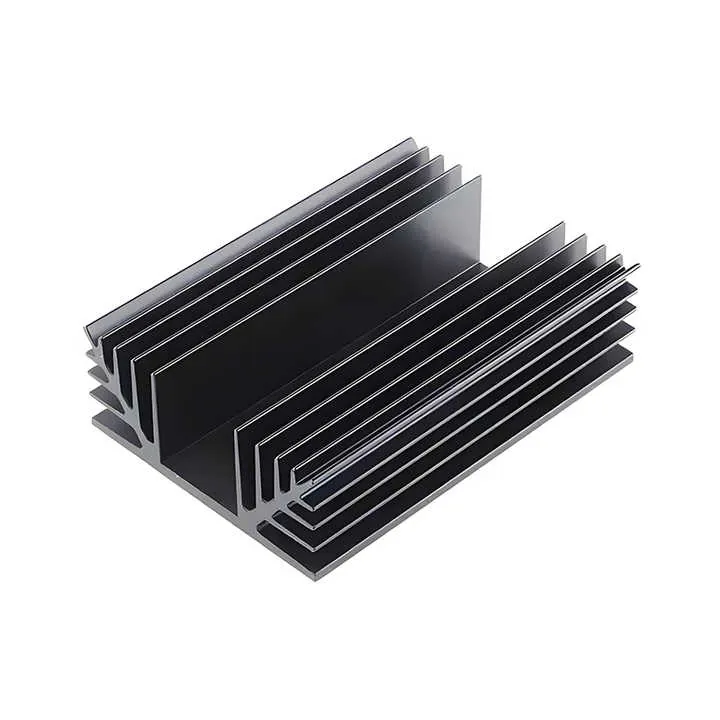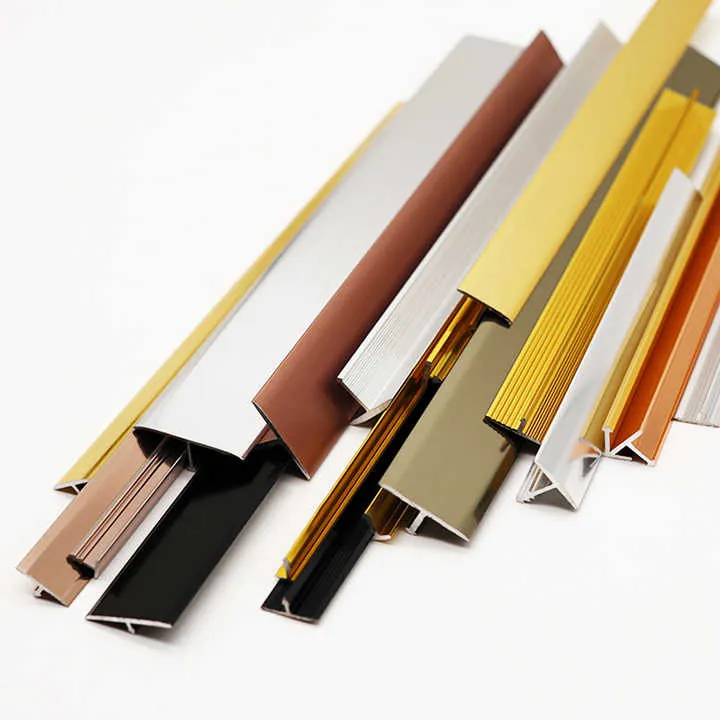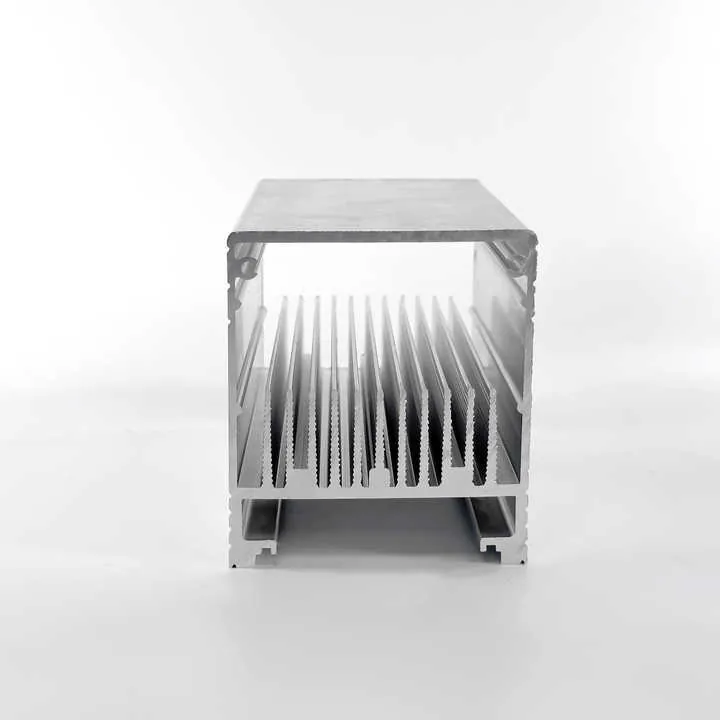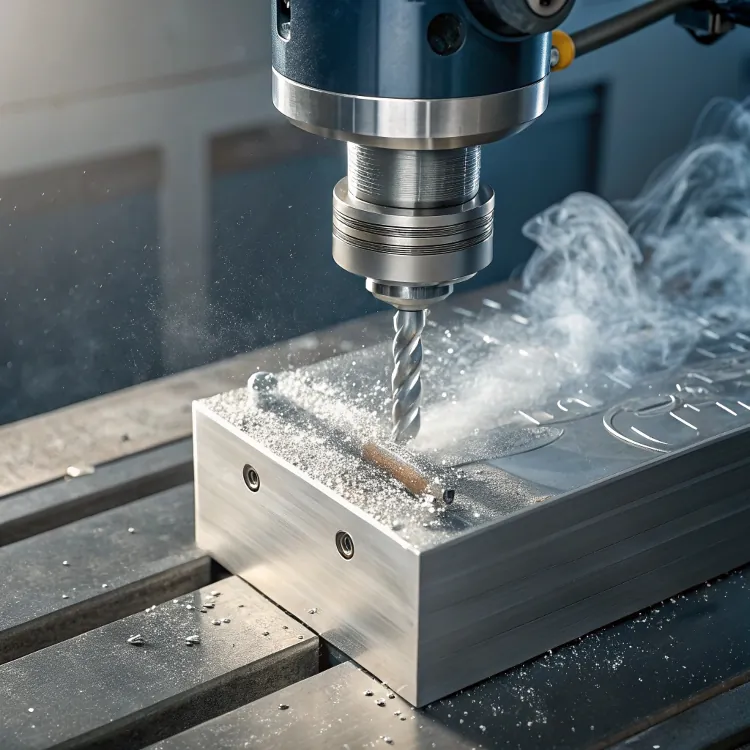
Sometimes clients ask if CNC routers can handle aluminum. They assume it's only for wood or plastic. But that’s a misunderstanding.
Yes, CNC routers can cut aluminum, especially when configured correctly and operated with care. The results can be surprisingly precise, even on lighter-duty machines.
Many people overlook CNC routers for aluminum due to myths about tool damage or inaccuracy. But with the right setup and practices, CNC routers are capable allies in aluminum part production.
Benefits of Using CNC Routers for Aluminum?
Many think of milling machines when it comes to aluminum, not routers. That bias misses some important advantages.
CNC routers are flexible, cost-effective, and fast when processing aluminum parts, especially for prototyping or low-volume production.
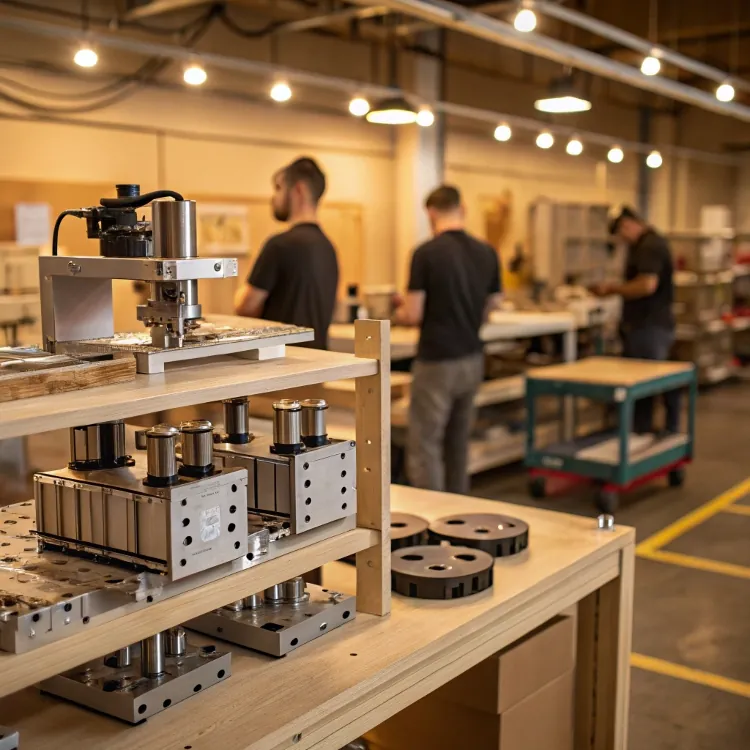
When I work with startups or small design teams, they often need fast aluminum parts but don’t have the volume for industrial CNC mills. Routers become a perfect choice. Here are some key benefits:
Faster Setup and Lower Costs
Compared to vertical machining centers, CNC routers usually cost less and are easier to set up. For thin aluminum sheets or plates under 10mm, the speed and access a router offers is ideal.
| Feature | CNC Router | CNC Mill |
|---|---|---|
| Cost | Lower | Higher |
| Setup Time | Shorter | Longer |
| Ideal Material | Aluminum sheets, light plates | All aluminum types including blocks |
| Typical Use Case | Prototypes, signage, light brackets | Engine parts, heavy-duty structures |
Larger Working Area
Many CNC routers come with large work beds, making them perfect for cutting bigger panels, like aluminum faceplates, enclosures, or signage. This is a big win when working with consumer electronics brands needing aesthetic parts with consistent surface treatments.
Smooth Surface Finishing
With the right end mill and speed settings, CNC routers can produce impressively clean edges and surfaces. This makes post-processing like anodizing or powder coating more predictable.
Typical CNC Router Setups for Aluminum Cutting?
The biggest mistake I see is treating aluminum like wood in routing.
To cut aluminum properly with a CNC router, you need rigid setups, slow speeds, and lubrication or air cooling.
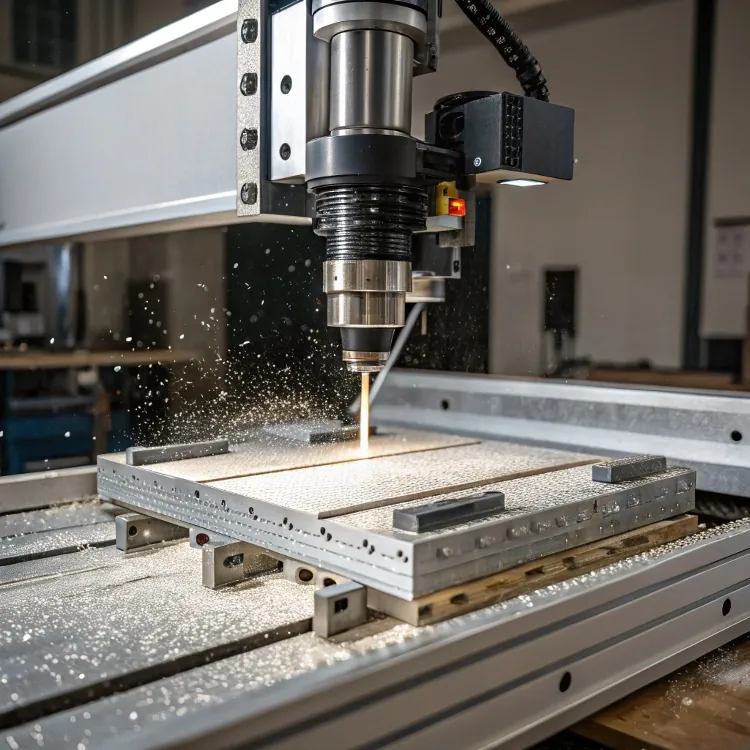
When I upgraded our router for aluminum jobs, I focused on rigidity and vibration control. Here's what a good setup usually includes:
Table and Hold-Down
A vacuum table works well for plastics, but not for metal. I use T-slot tables with mechanical clamps or double-sided tape. Even better, custom fixtures for irregular aluminum blanks.
| Setup Component | Why It Matters for Aluminum |
|---|---|
| Rigid Frame | Reduces vibration, improves accuracy |
| Spindle (2.2kW+) | Ensures enough torque |
| Mist/Lubrication | Cools the bit and removes chips |
| Enclosure | Contains chips, adds safety |
Tooling and Speeds
I recommend single or two-flute carbide end mills. Lower RPM (under 18,000) and feed rates around 300–600 mm/min depending on the cut depth. It might seem slow, but it protects both the bit and the workpiece.
Air Blast or Mist Cooling
Aluminum chips stick easily. Air blast keeps the tool path clean. Mist coolant also helps avoid overheating. I use a small compressor to blow chips away while routing.
Limitations and Best Practices When CNC Routing Aluminum?
Routing aluminum isn't magic. Mistakes happen when people assume routers are just mini mills.
The main limits are cut depth, rigidity, and heat—so go slow, use sharp bits, and keep chips clear.
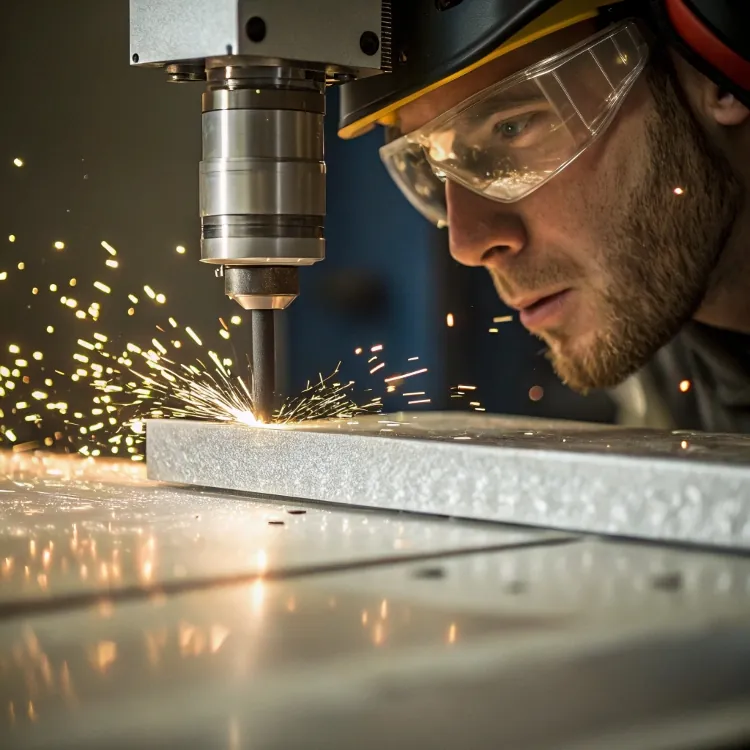
Aluminum is softer than steel but much tougher than wood. Here's how I learned to respect it on the router:
Best Practices
- Use shallow passes. Don’t try to remove too much material at once. Depth of cut should stay under 1mm.
- Keep your tool sharp. Aluminum dulls cutters fast. I change bits often and avoid using damaged tools.
- Control vibration. Extra bracing and damping reduce chatter. Double-check that the material is flat and clamped tight.
- Clean the path. A blocked flute overheats and melts aluminum. That's a fast way to ruin your work and your bit.
Common Mistakes
| Mistake | Result | Solution |
|---|---|---|
| High feed rate | Broken bit or poor finish | Lower speed, better control |
| No lubrication | Aluminum welding to the tool | Use mist or air blast |
| Weak hold-down | Part movement, ruined cut | Use mechanical clamps or jigs |
| Wrong bit type | Burn marks or melted chips | Use carbide, 1–2 flute end mills |
What Materials Work Best Alongside Aluminum in CNC Routing?
Mixed-material projects are common in modern devices. I often see aluminum paired with plastics, composites, or even woods.
Plastics like acrylic or polycarbonate, and lightweight woods like MDF, work smoothly alongside aluminum in CNC routing jobs.

When I help a startup prototype a wearable device, they often use aluminum for structure and plastics for covers or inner frames. This mix gives strength, light weight, and lower costs.
Material Combinations
| Aluminum + Material | Use Case Example | Why It Works |
|---|---|---|
| Polycarbonate | Device covers, internal frames | Strong, impact-resistant, easy to cut |
| ABS or Nylon | Mounting brackets, connectors | Good dimensional stability |
| MDF or Plywood | Jigs, non-critical enclosures | Easy and cheap for test fits |
| Acrylic | Transparent covers, light diffusers | Aesthetic, machinable |
| Carbon Fiber (CFRP) | Robotics parts, drones | Super strong, lightweight |
Important Notes
- Use different tools. Don't cut plastic and aluminum with the same end mill.
- Adjust speeds. Plastics cut faster but can melt, so cooling is still needed.
- Separate passes. When routing multiple materials, consider separate operations to avoid tool wear.
Conclusion
CNC routers can cut aluminum effectively if you respect their limits. With careful setup and smart practices, routers become a powerful tool for precision aluminum parts.

